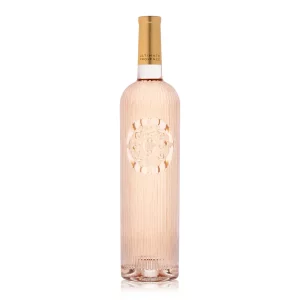An immersive exploration of rosé wine, tailored for discerning sommeliers and restaurants in the UK.
Let’s navigate the nuances of rose, from its delicate hues to the diverse range of flavors, offering insights into selecting the finest varietals and elevating the rosé experience for your patrons.

The Palette of Rosé wine colors
a chapter that unveils the kaleidoscope of hues inherent in these delightful wines. Rosé, with its spectrum ranging from pale blush to deep coral, introduces a visual richness that is both alluring and informative for discerning sommeliers.
Understanding Rosé wine colors: A visual feast
The subtle variations in rosé colors are a reflection of grape varietals and winemaking techniques. Delicate pinks suggest lighter, fresher styles, while deeper hues indicate more robust flavors and potential for aging. Embrace the diversity of colors, each telling a story of terroir and craftsmanship.
Interpreting Rosé wine hues for selection
As a sommelier, decoding rosé colors is an essential skill. Pale salmon tones often hint at delicate berry notes, while vibrant pinks may indicate bolder, fruit-forward profiles. Dive into the world of coral, onion skin, and salmon to guide your patrons toward a visual and flavorful experience aligned with their preferences.
Navigating Rosé wine regions through color
Different regions contribute distinct color profiles to rosé wines. Explore the pale pinks of Provence, the deeper hues of Tavel, or the salmon shades of Italian Rosato. Understanding regional influences enhances your ability to curate a diverse and enticing selection for your restaurant.
Flavors and aromas: A Rosé wine symphony
A chapter that delves into the intricate harmony of scents and tastes within rosé wines. Explore a bouquet of vibrant red fruits, floral notes, and subtle nuances that characterize these enchanting varietals. From the crisp allure of strawberries to the aromatic dance of rose petals, each sip orchestrates a symphony on the palate, painting a sensory masterpiece. Understand how grape varieties and terroir contribute to the diverse profiles of rosé, allowing sommeliers to guide patrons through a captivating tasting experience. This chapter invites you to become a maestro, orchestrating the exploration of the nuanced flavors and aromas that make rosé wines a delightful and memorable part of any gastronomic journey.
Pairing perfection: rose and cuisine
A chapter that unravels the art of harmonizing rosé wines with delectable dishes. Delve into the versatility of rosé, where its acidity and fruit-forward nature become a culinary asset. Explore pairings that range from the refreshing crispness of a pale rosé complementing light salads to the robust character of deeper-hued rosés enhancing the flavors of grilled meats. As a sommelier, master the nuances of matching the right rosé with diverse cuisines, creating a symphony of flavors that resonates with patrons. From seafood to spicy dishes, this chapter guides you through the intricacies of achieving pairing perfection, ensuring that each sip and bite coalesce into a culinary masterpiece that elevates the dining experience to new heights.
Rose trends: from Still to Sparkling
Crafting a Rosé Experience
Elevate your patrons’ experience with expert guidance on serving and presenting rosé. Learn the optimal serving temperatures, glassware choices, and the art of storytelling that transforms each pour into a memorable moment for your clientele. Use a Wikeeps pouring system to enhance elegance and meanwhile manage a long preservation of your finest wines.
Frequently Asked Questions
- What makes rosé wine different from other varieties? Rosé is crafted from red grape varietals, but unlike red wines, the grape skins are in contact with the juice for a shorter period, resulting in the signature pink hue and a lighter flavor profile.
- How do I choose the right rosé for my restaurant’s wine list? Consider the desired flavor profile, acidity, and versatility. A well-balanced rosé with crisp acidity is often preferred for pairing with a diverse range of dishes.
- Are there specific regions known for producing exceptional rosé? Yes, regions like Provence in France, Spain’s Rosé Cava, and certain areas in Italy and the UK are renowned for their high-quality rosé production.
- Can rosé wines age, or are they best enjoyed young? While many rosés are crafted for immediate consumption to preserve their freshness, certain premium rosé wines can develop unique characteristics with a few years of aging.
- What’s the ideal serving temperature for rosé? Rosé is best served chilled, typically between 45-55°F (7-13°C), to enhance its refreshing qualities. However, avoid overly cold temperatures that may mask its nuanced flavors.
Conclusion (150 mots)
In conclusion, this comprehensive guide to rosé wine serves as a valuable resource for sommeliers and restaurants aiming to curate an exceptional wine selection. From understanding the diverse colors and flavors to mastering the art of pairing, trends, and crafting a memorable experience, embracing the world of rosé will undoubtedly elevate your establishment’s offering. May this guide inspire you to explore the endless possibilities within the spectrum of rosé wines, enchanting both seasoned connoisseurs and newcomers alike. Cheers to an elevated rosé experience in your restaurant!
